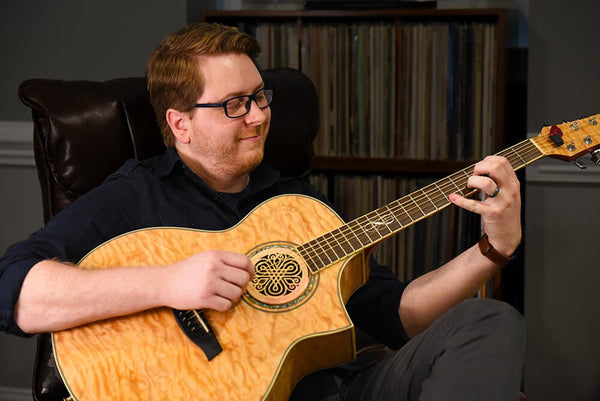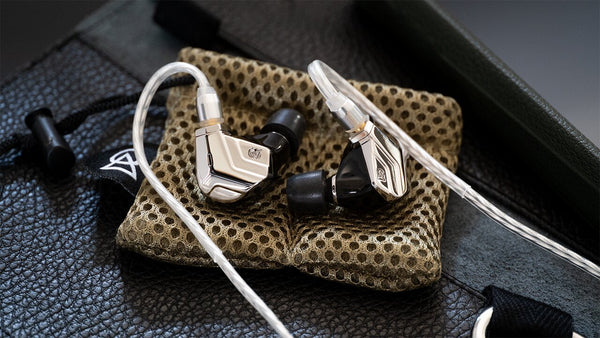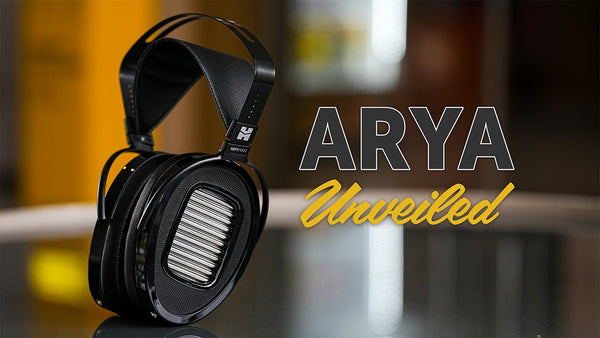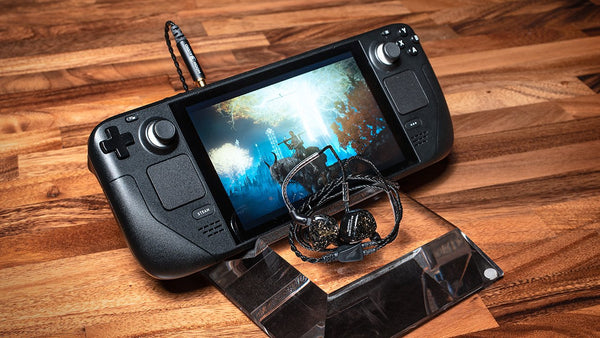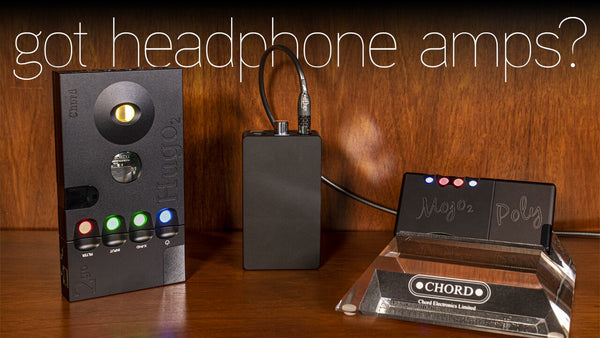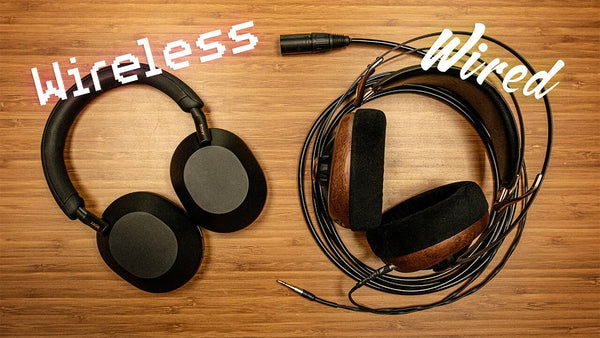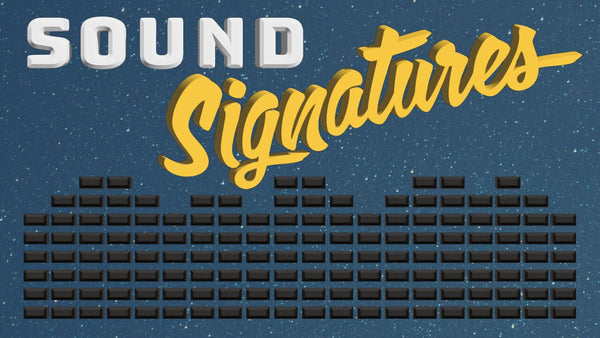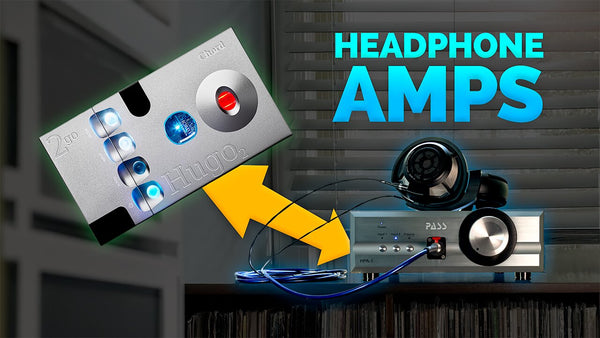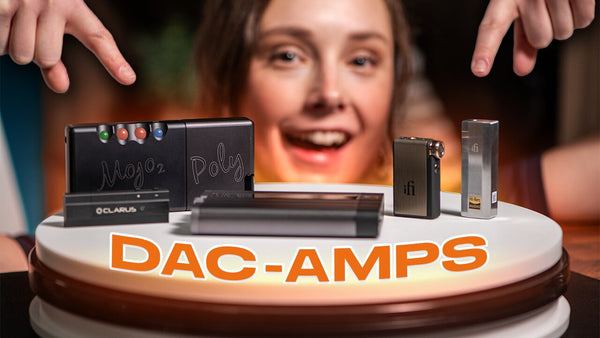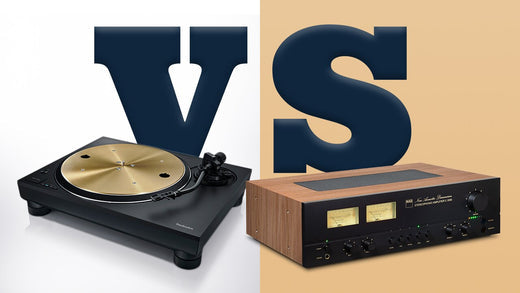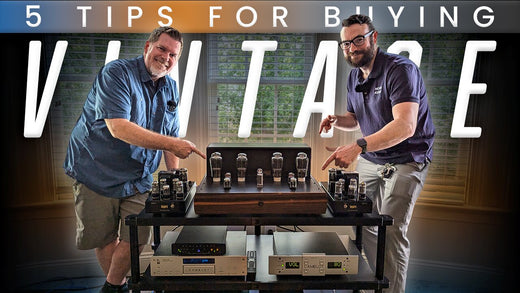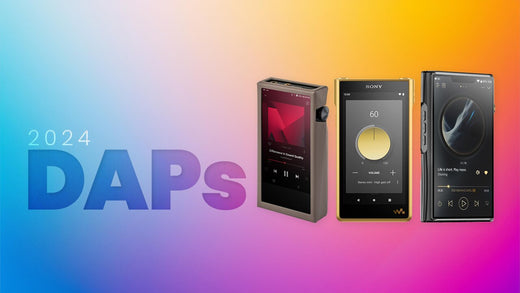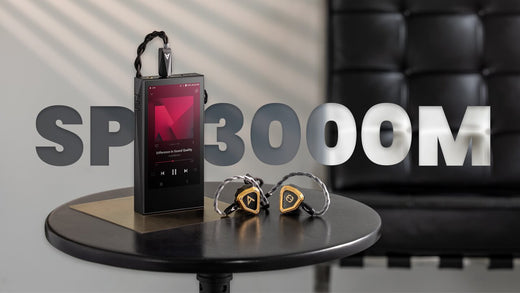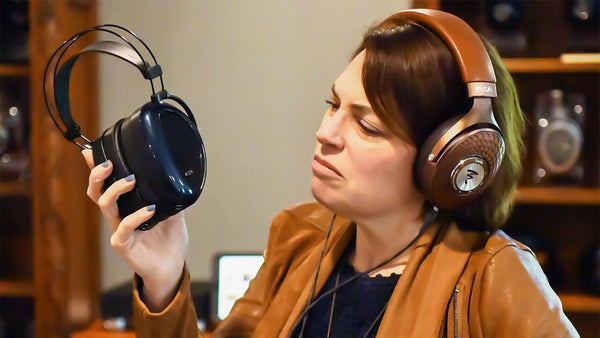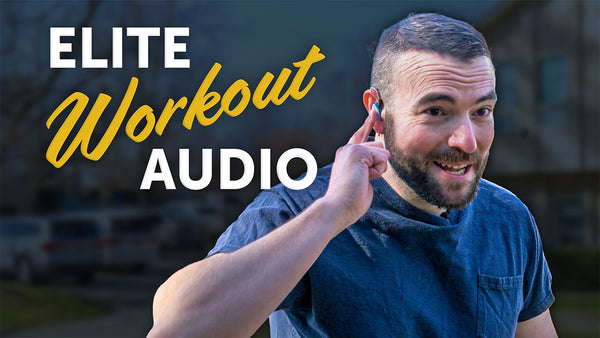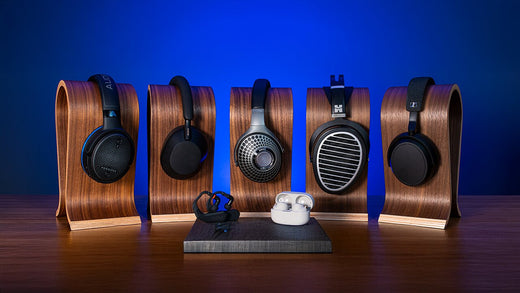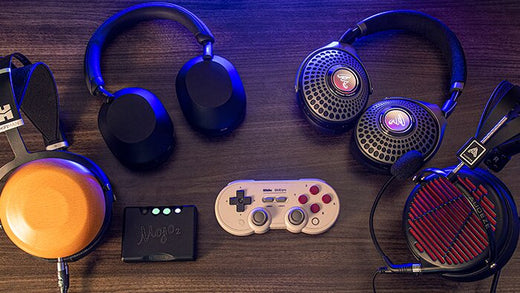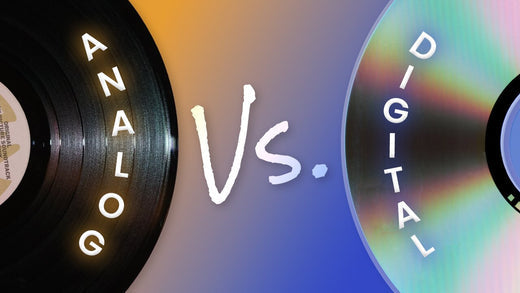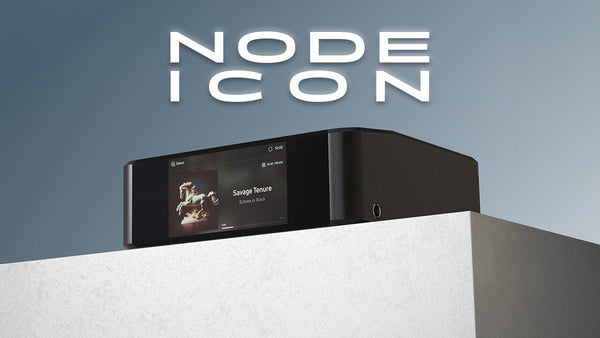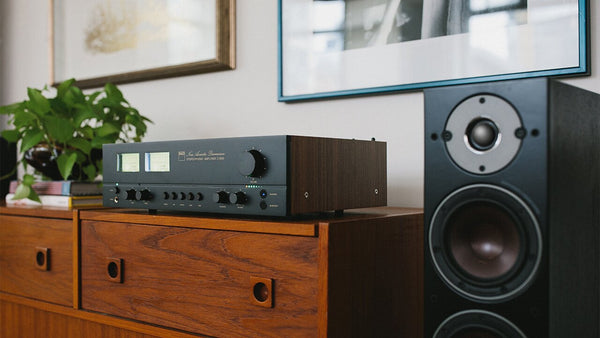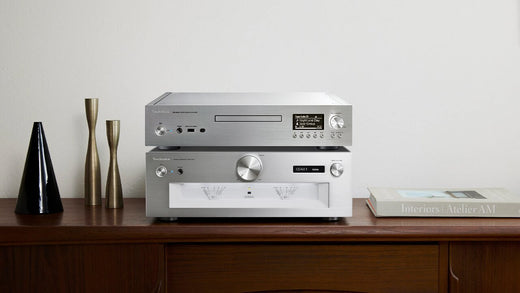4 Reasons to Ditch Your MP3 Player

Why You Should Be Using a Hi-Res DAP or Music Player
The iPod. It was a revolutionary product that single-handedly changed the entire music industry. One thousand songs right there in your pocket. No more carrying around binders of CDs, tapes, or the many other now obsolete ways of playing music away from your home stereo system. The music industry changed its focus to digital music, taking away all the "stuff" from physical packaging and just getting you to your music that much faster. Album sales started declining as iTunes and other digital music stores pushed the single. Only 99 cents a song? It sounds like a lifetime ago, but the lasting effects are still ever-present in the music industry today.
The downside to 99-cent - MP3 files is that they sound bad. It's only with the changes in the past 5 years or less that music services have begun to release their music in high-resolution formats to appease the music lovers out there who want better quality in the music they pay for and listen to. At the very minimum, streaming services offer a variety of bitrates for MP3 - from 128 to 320 kilobits per second (kbps). 320 MP3s aren't that bad for the average consumer - but that's not you, is it?
You want more from your music, and that's a good thing. Let's take a look at the MP3 player, and why you need to replace it with a DAP, or digital audio player as soon as possible.
4 Reasons to Ditch Your MP3 Music Player

PROS
- High-quality components, high-quality sound
- Analog Outputs
- File compatibility, hi-res BT codecs & expandable storage
CONS
- Carrying an extra device
- Can be expensive
What is a DAP?
DAP stands for Digital Audio Player and is essentially like an iPod on steroids. They're made with premium components, high-end DACs, and amplifier circuits, and can handle hi-res local and streaming files and formats with ease. More power, better sound, and having a device solely designated to making your music sound the best it can result in huge gains in fidelity over your smartphone. DAPs can range a lot in price as well, and they can range from around $500 for an older or less powerful model to $3,000 and up. Some of the best brands that we recommend are Astell&Kern, iBasso, and Sony. It’s not just about what they can play, but also how they are designed that makes a DAP outperform a phone, MP3 player, or consumer device when it comes to music playback. DAPs by design are typically quite similar to phones, which makes sense because they’re touchscreen devices and pretty much every consumer handheld device on the market is designed this way. Rectangular, touch screen, ports, buttons, and knobs - it’s in no way a foreign device in itself. It’s designed to be intuitive.
Here’s what you’ll find on most DAPs: a touch screen interface, a built-in headphone amplifier with a selection of ports for your headphones, local and expandable storage options - like a micro SD card, and the real star of the music show - the high-end DAC, or digital-to-analog converter chip or chips. DACs do the heavy lifting of converting your data to an analog signal. Your phone and computer have DACs in them too - basically, every consumer device out there that plays music or sound and has speakers has a DAC chip. The only thing is that these factory chips aren’t great and essentially just get the job done. DAPs have high-end DAC chips that efficiently and accurately convert your music data to sound the very best it can - oftentimes with the help of the amplifier circuit and other high-end, audiophile-grade components inside the player.

The great thing about digital audio players is that they can handle high-resolution audio streams with efficiency. Playing hi-res files on your iPhone with some Airpods is quite frankly ridiculous because the technology of those Apple products will not yield quality results for high-resolution audio. They do however work in much the same way as a smartphone, so likewise, you'll need to download your streaming apps (or in some cases, they come preinstalled) and press play. An audiophile-quality DAP paired with a nicer pair of headphones will provide a better listening experience all around. DAPs can also act as an access point for an external library. For example, Astell&Kern DAPs have what they call BT Sink - "BT" stands for Bluetooth - and can essentially connect to a device like your phone where you have a music library stored locally, connect via Bluetooth, and stream it through the much better internals of the music player. Why do this? Well, if you don't have the storage space on your DAP or want to supplement your existing library with an external one, then BT Sink is a great option to give you access to even more music. In the end, DAPs are a great first step in upgrading your music from your phone. It's time to get your music back to a standalone playback device like an iPod, just something a little (okay, a LOT) better than your phone.
Getting a DAP, or even just using a portable USB DAC, is taking the next step to better sound, and you can be sure by using one, you’re getting the most out of your streaming experience as well. Take advantage of those higher resolutions and bitrates. If you’re already paying for the high-res service, make sure you’re getting the real high-res listening experience when you’re on-the-go.
Why Should I Use A DAP?
The DAP is like the Apple iPod of today. It's a standalone music listening device in much the same way - only they're made with some of the best components on the market for music playback. High-end processors, amp circuits, various I/O configurations, and most importantly - a high-end digital-to-analog converter, or DAC chip(s). So think of them like iPods on steroids. They come in many sizes and price points, so depending on your budget or what you are upgrading from, there is an incredible amount of potential to make your music sound absolutely stunning.
1. High-quality Components, High-quality Sound
Digital audio players by definition aren't different from MP3 players or “portable music players” - since they both playback digital music. It can also be confusing because, in the infancy of portable digital music, the MP3 player was synonymous with the device that can play back portable music. Today, in the literal sense, a DAP is also an MP3 player since it can playback MP3 audio files. In a way, we have a war on words as technology continues to improve and advance. Sure, there are still "MP3" players on the market today, but they are cheaper, more consumer-friendly devices that can only play back MP3 formatted files (in most cases).
The digital audio player, or DAP, sets itself apart by being made with premium components and being able to natively play back almost any format of digital music out there. There are tons of different file formats out there for digital music, and most DAPs come out of the box ready to tackle most available file formats out there. Here's just a sample of what Astell&Kern DAPs are compatible with:
WAV, FLAC, WMA, MP3, OGG, APE, AAC, ALAC, AIFF, DFF, DSF, MQA
Since most high-resolution audio is formatted in this way, the music player is going to be able to take full advantage of the data. A good ol' MP3 player is usually only compatible with a few of these formats, and hardly has enough storage for a full high-resolution music library.
2. Expandable Storage

Speaking of storage, chances are if you are spending under $100 on an MP3 player then you're stuck with whatever storage space comes installed internally. MP3 players nowadays focus on portability and convenience. You put your music on there and just hit play. There are even some MP3 players that are just earphones with MP3 file playback built into the earphone. Why not kill two birds with one stone, right?* (No animals were harmed in the writing of this blog/guide). Of course, there are a handful of MP3 players out there that have expandable storage, but the other thing they focus on is the form factor. If you do a quick google search you'll see that some of the most popular consumer MP3 music players have one thing in common: they're all really small. A couple of buttons for playback controls, maybe a tiny screen to see which song is playing, and likely a clip to attach it to your clothes; MP3 players focus on the ability to get you connected to your music as quickly and effortlessly as possible wherever you go. And that's not necessarily a bad thing, but it takes two critical things out of the enjoyment of listening to music.
3. Putting the Fun Back Into Listening to Music
The obvious first factor is sound quality. It's not going to be great. Exacerbating that factor is going to be the cheap headphones or earphones you're likely going to use (because why would you be using a nice pair of headphones with something that costs $50?). The next thing is the overall experience of listening to music. MP3 players are meant to be incorporated into your day-to-day, essentially providing the soundtrack to your current activity. There's nothing inherently wrong with that notion, as we all have the need for music to accompany our lives throughout the day. But the MP3 player is never used to simply...listen to music. It forgets that listening to music is an activity in itself, and we in turn forget the importance of simply sitting and listening.
I think this is one of the biggest differences between people who like to just have some music on for background noise and who I hesitantly call "audiophiles." I'm not necessarily a fan of the term audiophile, as I think it's too limiting for the spectrum of people who love music. Like all things, there are varying degrees of passion for something that we enjoy, but in this circumstance, I'll just use it to denote those who want more from their music and enjoy simply listening to music as a proper activity.
In today's busy world, it's sometimes easy to forget that just sitting around and listening to music was an enjoyable thing to do. To flip through the pages of the vinyl, or CD booklet, or read whatever was on the back of the cassette tape - it's all part of the experience. The music players of today and the streaming services that offer high-resolution music have figured this out again. Qobuz and Tidal are some of our favorite hi-res streaming services here at Moon Audio because they give the listening content to read about their currently playing tracks. Articles, recordings and album images and info, even the quality of music they are listening to - it all lends itself to the overall experience. You simply can't have that on a little device that barely fits track skip buttons and a miniature dot-matrix screen.
4. They've got Headphone Jacks!
Phones are already forcing users to go wireless or use adapters. That was my single biggest disappointment when the iPhone went its separate way from the 3.5mm headphone jack. The consumer market is going wireless. There’s no denying it’s trading quality for convenience.
Modern DAPs don’t argue that there is convenience in going wireless at times, as most digital music players retain the functionality of Bluetooth connections. High-resolution Bluetooth codecs like LDAC and aptX HD can arguably transmit high-resolution audio data (to the point where it's at least indistinguishable from a hi-res analog connection some sources claim). But the best, most reliable connection will always be a cable. There is one thing the DAP will never let go of, and that is the analog headphone connection. Music players usually have multiple ports, including both single-ended (unbalanced) and balanced jacks (or up to 3 headphone jacks in some cases), allowing the user the choice based on their headphone or cable type.
Again, the DAP retains the ability to go wireless if you so choose, but most people that prefer to maintain the best sound quality in their music should prefer the cabled option when listening. It's the best sound you'll get, and that's all that matters when it comes to playing and enjoying your favorite music.
Where Do I Plug My Headphones In?
Read that heading again. Do you think we'll ever get to a time when we no longer have to "plug in" headphones? It might happen eventually, but it's already happening with our mobile devices. Apple was one of the first companies to do away with the physical analog headphone jack, and now more and more Android phones are following suit in favor of adapters and Bluetooth connections. Heck, even some MP3 players are built into the headphones themselves now. It's convenient, sure, but I can't even being to think about the user experience part of that.

Modern DAPs don't argue that there is convenience in going wireless at times, as most digital music players retain the functionality of Bluetooth connections. High-resolution Bluetooth codecs like LDAC and aptX HD can arguably transmit high-resolution audio data (to the point where it's at least indistinguishable from a hi-res analog connection some sources claim). But the best, most reliable connection will always be a cable. There is one thing the DAP will never let go of, and that is the analog headphone connection. Music players usually have multiple ports, including both single-ended (unbalanced) and balanced jacks (or up to 3 headphone jacks in some cases), allowing the user the choice based on their headphone or cable type.
Again, the DAP retains the ability to go wireless if you so choose, but most people that prefer to maintain the best sound quality in their music should prefer the cabled option when listening. It's the best sound you'll get, and that's all that matters when it comes to playing and enjoying your favorite music.
Perhaps one of the only downsides to a DAP is the fact that you'll be carrying around two devices - the DAP and your phone. For most music lovers I think the trade-off would be worth it, considering the major improvements and overall experience you'll get from the digital music player. In fact, one of the best things you can do for your listening experiences is to disconnect from the world - simply just experience the music.
It's easy to get distracted when you're on your phone. There are a million apps available at the touch of a button to take your attention away from the music. Society also trains us that unless we're multitasking with a handful of other things then we're being unproductive. Set that phone aside. Disconnect. Just sit there and enjoy the music for once. Your ears and mood will thank you for it later. We're so used to having music simply be the background soundtrack of our lives that we forget that it can be a relaxing standalone or recreational activity. Just like getting a massage, going to the pool, or working out - listening to music can do a lot for our stress, mood, and relaxation overall.
Dragon Cables
Our HiFi Audio Dragon Cables bring out more of what you love in your music and audio gear. If you love your headphones but wish they had a bit more top-end sparkle - a Silver Dragon Headphone Cable would be a great option. If your USB cables keep dying - as many stock cables do - then check out our quality USB Audio Cables. We say time and time again that materials matter, and our audio cables and custom geometries actually help to bring out those desired properties in your gear and music. We make tons of custom options for our customers so that you can get the right HiFi Audio cable for your exact needs. If you have any questions feel free to Contact Us and we'll be more than happy to help.

Verdict
It's 2025, people. It's time to stop using your phone for streaming to your AirPods or relative wireless earbuds. If you care about your music and how it sounds then it's time to upgrade to the iPod of today: the DAP. There are a lot of reasons why you should ditch your MP3 player for a more robust digital music player:
High-quality components, amazing sound quality, expandable storage, analog headphone jacks, high-resolution Bluetooth codecs, USB DAC connectivity, multiple port options, high-processing power, robust headphone or IEM amplification, sound customization, filters, and much more.
Probably the only real downside to using a DAP is that you'll be carrying around another device, but the pros far outweigh the cons. I think one of the biggest differences between audiophiles and everyone else when it comes to music is that audiophiles listen to music for the sake of actually listening to the music, whereas non-audiophiles simply use music as the accompanying soundtrack to the activity they're participating in. It's just background noise if you will. There is a forgotten appreciation of the experience of listening to music that non-audiophiles need to rediscover. I remember back to a time personally for me when I'd hear a song on the radio, I'd go out and buy the CD, go back home and listen to that song a billion times, and then experience the album from start to finish. Just sitting in my room listening to music. It was a simpler time, and I found a lot of joy in just sitting there and experiencing the music that was playing. Audiophiles get it. If you're not an audiophile, that's okay. Try it.
So drop your MP3 player. Your music deserves better. A DAP not only technically makes your music sound better with the high-end components and everything else, but it allows you to experience your music in a way that no MP3 player can. It affords you the freedom to get lost in your music, and at the end of the day, you can't put a price on that.
Related Videos
Best Digital Audio Players (DAPs) of 2024
4 Reasons to Ditch Your MP3 Player
Music Streaming 102: Portable Audiophile Gear




